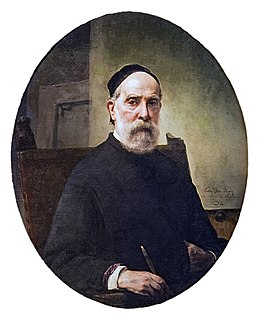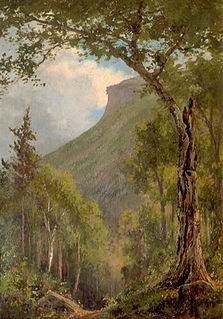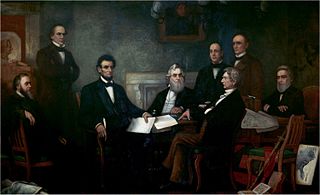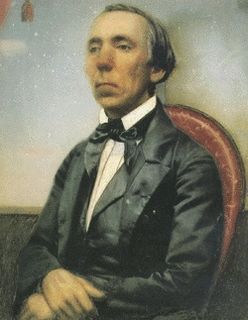
Edward Dalton Marchant (1806-1887), also known as Edward D. Marchant and E. D. Marchant, was an American artist. He was born in Edgartown, Massachusetts in 1806. Largely self-taught, Marchant began his career as a house painter, establishing a portrait studio in Edgartown by the mid-1820s. [1]

Edgartown is a tourist destination on the island of Martha's Vineyard in Dukes County, Massachusetts, United States, for which it is the county seat.
Marchant is known to have studied briefly with artist Gilbert Stuart in Boston in 1825, familiarizing himself with the artist's style. [2] Marchant began an early, peripatetic career by late 1826 advertising his services in a Charleston, South Carolina newspaper, but returned to Edgartown in 1828-1829. He would soon after relocate to Worcester, Massachusetts, painting some of the city's prominent citizens. [1] Marchant was active in New York City after 1832, [1] completing many portraits of well-to-do merchants and political leaders during the 1830s and 1840s; [2] in addition, he completed commissions in several Ohio cities as well as in Nashville and New Orleans, before settling in Philadelphia in 1854 where he would remain for another thirty years. [2] [3] Although mostly known for his portraits in oil, Marchant also created miniatures. [1] He was elected to a number of arts academies and exhibited regularly during his lifetime. [1]

Gilbert Charles Stuart was an American painter from Rhode Island who is widely considered one of America's foremost portraitists. His best known work is the unfinished portrait of George Washington that is sometimes referred to as The Athenaeum, begun in 1796. Stuart retained the portrait and used it to paint 130 copies which he sold for $100 each. The image of George Washington featured in the painting has appeared on the United States one-dollar bill for more than a century and on various U.S. postage stamps of the 19th century and early 20th century.

Charleston is the oldest and largest city in the U.S. state of South Carolina, the county seat of Charleston County, and the principal city in the Charleston–North Charleston–Summerville Metropolitan Statistical Area. The city lies just south of the geographical midpoint of South Carolina's coastline and is located on Charleston Harbor, an inlet of the Atlantic Ocean formed by the confluence of the Ashley, Cooper, and Wando rivers. Charleston had an estimated population of 136,208 in 2018. The estimated population of the Charleston metropolitan area, comprising Berkeley, Charleston, and Dorchester counties, was 787,643 residents in 2018, the third-largest in the state and the 78th-largest metropolitan statistical area in the United States.

Worcester is a city in, and the county seat of, Worcester County, Massachusetts, United States. Named after Worcester, England, as of the 2010 Census the city's population was 181,045, making it the second most populous city in New England after Boston. Worcester is located approximately 40 miles (64 km) west of Boston, 50 miles (80 km) east of Springfield and 40 miles (64 km) north of Providence. Due to its location in Central Massachusetts, Worcester is known as the "Heart of the Commonwealth", thus, a heart is the official symbol of the city. However, the heart symbol may also have its provenance in lore that the Valentine's Day card, although not invented in the city, was mass-produced and popularized by Esther Howland who resided in Worcester.
An ardent opponent of slavery who advocated for the return of slaves to Africa, [3] Marchant was commissioned by the Union League of Philadelphia in December 1862 to paint a portrait of Abraham Lincoln to be displayed in Independence Hall. [2] Marchant worked in the White House for several months in early 1863, having daily contact with the President, [3] and ultimately depicted him seated at a table having just signed the Emancipation Proclamation. Marchant said that his painting "triumphantly gives lie to those hideous caricatures of Mr. Lincoln" which were at the time widely circulated in the hostile press. [2] Authorized reproductions of Marchant's somewhat idealized portrait were widely circulated prior to the 1864 presidential election, and printed at a rate of 1,000 per day. [3]
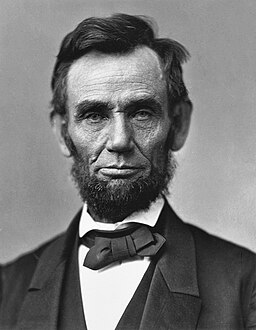
Abraham Lincoln was an American statesman, politician, and lawyer who served as the 16th president of the United States from 1861 until his assassination in April 1865. Lincoln led the nation through the American Civil War, its bloodiest war and its greatest moral, constitutional, and political crisis. He preserved the Union, abolished slavery, strengthened the federal government, and modernized the U.S. economy.

Independence Hall is the building where both the United States Declaration of Independence and the United States Constitution were debated and adopted. It is now the centerpiece of the Independence National Historical Park in Philadelphia, Pennsylvania.

The Emancipation Proclamation, or Proclamation 95, was a presidential proclamation and executive order issued by United States President Abraham Lincoln on January 1, 1863. It changed the federal legal status of more than 3.5 million enslaved African Americans in the designated areas of the South from slave to free. As soon as a slave escaped the control of the Confederate government, by running away or through advances of federal troops, the former slave became free. Ultimately, the rebel surrender liberated and resulted in the proclamation's application to all of the designated former slaves. It did not cover slaves in Union areas that were freed by state action. It was issued as a war measure during the American Civil War, directed to all of the areas in rebellion and all segments of the executive branch of the United States.
Another 1864 Marchant portrait of Lincoln is featured today in the Lincoln Room of the President's Guest House (known as Blair House) in Washington, D.C., where it may be viewed by visiting dignitaries. Marchant died in Asbury Park, New Jersey on August 15, 1887.

The President's Guest House, commonly known as Blair House, is a complex of four formerly separate buildings—Blair House, Lee House, Peter Parker House, and 704 Jackson Place—located in Washington, D.C., the capital of the United States. A major interior renovation of these 19th century residences between the 1950s and 1980s resulted in their reconstitution as a single facility.

Washington, D.C., formally the District of Columbia and commonly referred to as Washington or D.C., is the capital of the United States. Founded after the American Revolution as the seat of government of the newly independent country, Washington was named after George Washington, the first president of the United States and a Founding Father. As the seat of the United States federal government and several international organizations, Washington is an important world political capital. The city is also one of the most visited cities in the world, with more than 20 million tourists annually.

Asbury Park is a city in Monmouth County, New Jersey, United States, located on the Jersey Shore and part of the New York City Metropolitan Area.










